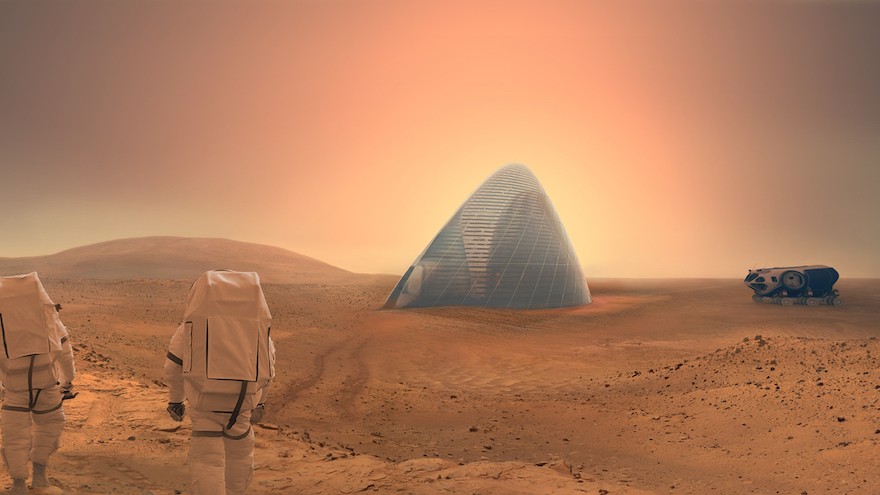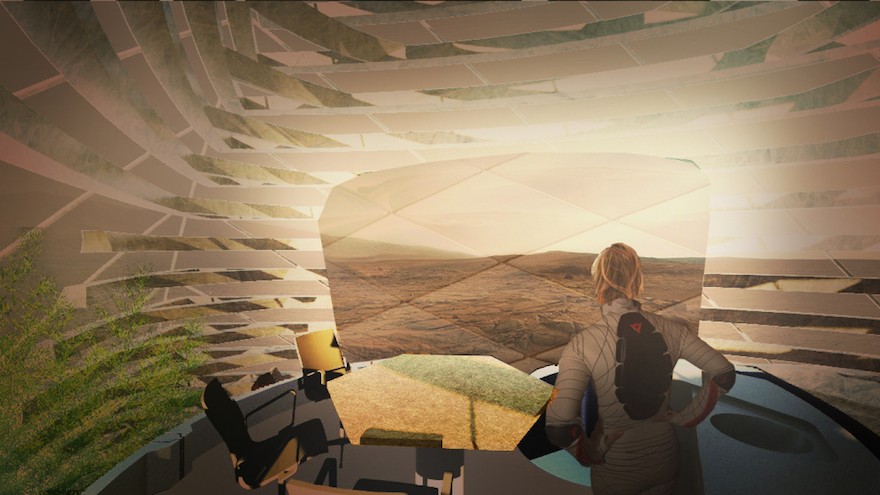From the Series
NASA awarded the $25 000 first-prize award for the 3D Printed Habitat Challenge Design Competition to Mars Ice House, designed by SEArch (Space Exploration Architecture) and space reseach collective, Clouds AO (Clouds Architecture Office). Their 3D-printed ice home celebrates the recent discovery of liquid water on the surface of the Red Planet, and includes vertical gardens, viewing decks for contemplation and a protected “front yard” where astronauts can take off their spacesuits.
The design competition challenged its entrants to imagine how the unique capabilities of 3D printing might be utilised in an extraterrestrial landscape and to conceive of a human dwelling on the surface of Mars that uses this technology and native resources.
“Recognizing that water is the building block to life, the team used a ‘follow the water’ approach to conceptualize, site and construct their design," say SEArch and Clouds AO.
Their design was one of the few that did not seek to bury the dwelling beneath the surface of the planet. And to go a step further, they were the only studio to design a space made with transparent walls.
As well as offering protection from harmful radiation in the atmosphere, the five centimetre thick ice walls allow the house to take on the natural rhythm of day and night cycles, which SEArch and Clouds AO say is vital to the psychological and emotional wellbeing of the inhabitants. There are also large windows where the ice walls are thinner (and therefore the view clearer), which offer the opportunity for private or collective contemplation.
The design also includes an intermediate zone that offers a new dimension of freedom to extra-terrestrial living. “Thermally separated from the habitat interior, the occupiable ‘front yard’ pocket just inside the outer shell provides a truly unique protected neutral zone that is not entirely interior or exterior; it enables the astronauts to experience the “outside” without ever donning an EVA suit,” say the designers.
A vertical, hydroponic garden acts as a recreational space within the Mars Ice House, breaking the monotony of the barren, alien landscape and providing the crew with colour and natural plant life.
We recently featured the Martian home designed by Fabulous, which uses iron oxide as its 3D-printing substrate, and was also a short-listed design in NASA's competition. Plus, if you end up on Mars, you might want to consider a conceptual spacesuit by textile designer Alexandra Lucas.
All images courtesy of Mars Ice House.











